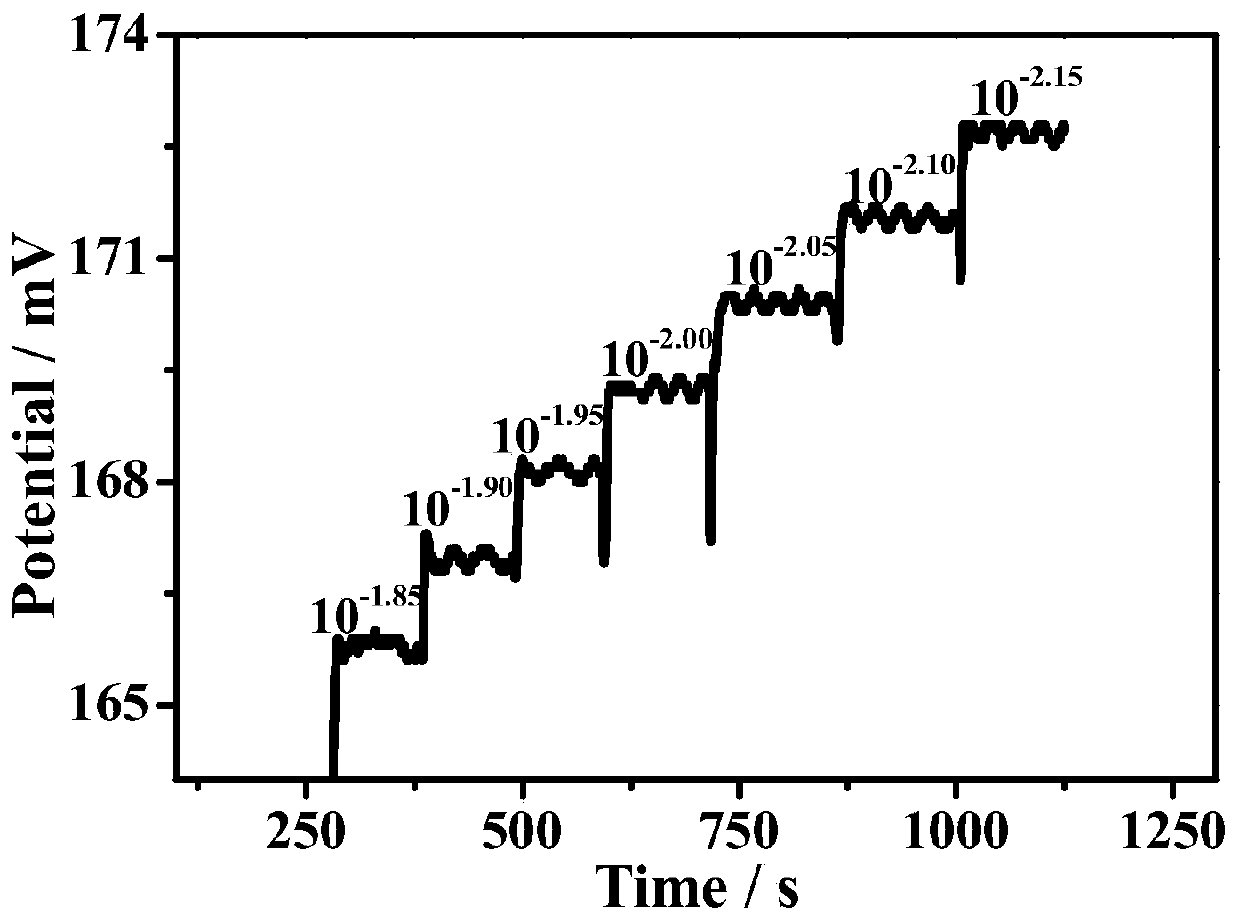Method and device for carrying out potential change detection through using photoelectrochemical method
A photoelectrochemical and change detection technology, applied in the field of electrochemical analysis, can solve problems such as complex processes, achieve the effects of simple preparation, reduced background signal, and strong versatility
- Summary
- Abstract
- Description
- Claims
- Application Information
AI Technical Summary
Problems solved by technology
Method used
Image
Examples
Embodiment 1
[0040] device such as figure 1 The shown includes a detection cell, an external electrochemical measuring device, and a light source; the detection cell is placed on the light source, and a working electrode, a reference electrode and an auxiliary electrode are inserted in the detection cell, and each electrode is connected to the external electrochemical measuring device through wires. connect.
[0041] Described working electrode is the electrode (1) that photosensitive material is modified, and its electrode surface is provided with photosensitive material (2); Reference electrode (3) is silver-silver chloride or ion selective electrode, (when ion selective electrode is used as reference When comparing the electrode, the surface of the electrode is provided with a polymer sensitive film (4); the platinum wire / sheet electrode is the object to be detected in the detection pool of the counter electrode (5); the light source (6) controls its switch through the wire Link to eac...
Embodiment 2
[0044] Preparation of photosensitive material modified electrode:
[0045] 1) Obtaining of photosensitive materials: ZnSe / r-GO composites were synthesized by hydrothermal method. Specifically:
[0046] 30 mg GO was dissolved in 18 mL deionized water by sonication; then 0.05 mol ZnCl 2 Add to the above solution. Finally, 18 mL of freshly prepared aqueous sodium selenosulfate (Na 2 SeSO 3 , by mixing 0.05MSe powder with 0.125M Na 2 SO 3 Reflux at about 80 °C for several hours), 2 g of urea and 0.4 g of PVP were added to the mixture solution of GO and zinc chloride; after the mixture was stirred for 30 min, they were poured into a 50 mL polytetrafluoroethylene-lined autoclave and The reaction was carried out at 180° C. for 12 hours.
[0047] 2) Preparation of electrode: The ZnSe / r-GO composite was dispersed in DMF at a concentration of 2 mg / mL. And drop 30 μL on the surface of the electrode, and dry overnight at room temperature. That is, an electrode modified with a pho...
Embodiment 3
[0054] Detect the potential response in solutions of different concentrations of calcium ions:
[0055] Preparation of polymer membrane ion selective electrode:
[0056] 1) The preparation of the electrode is:
[0057] ① Obtaining the conductive layer: Electropolymerize EDOT (0.01M) and PSS (0.1M) (the molar ratio of the two substances is 8-10:1) into a PEDOT (PSS) compound under constant current conditions, and then The composite is deposited on the surface of the glassy carbon electrode to form a conductive layer. The electrodeposition method is as follows: constant current method is adopted, the current is set at 0.014mA, and the deposition time is 714s; the thickness of the conductive layer can be controlled by adjusting the current and deposition time.
[0058] 2) Preparation of polymer sensitive membrane solution: by weight percentage, 0.46% calcium ionophore II, 0.48% Borate, 33.2% polyvinyl chloride and 66.04% NPOE were mixed and a total amount of 180 mg of the above...
PUM
 Login to View More
Login to View More Abstract
Description
Claims
Application Information
 Login to View More
Login to View More - R&D
- Intellectual Property
- Life Sciences
- Materials
- Tech Scout
- Unparalleled Data Quality
- Higher Quality Content
- 60% Fewer Hallucinations
Browse by: Latest US Patents, China's latest patents, Technical Efficacy Thesaurus, Application Domain, Technology Topic, Popular Technical Reports.
© 2025 PatSnap. All rights reserved.Legal|Privacy policy|Modern Slavery Act Transparency Statement|Sitemap|About US| Contact US: help@patsnap.com



